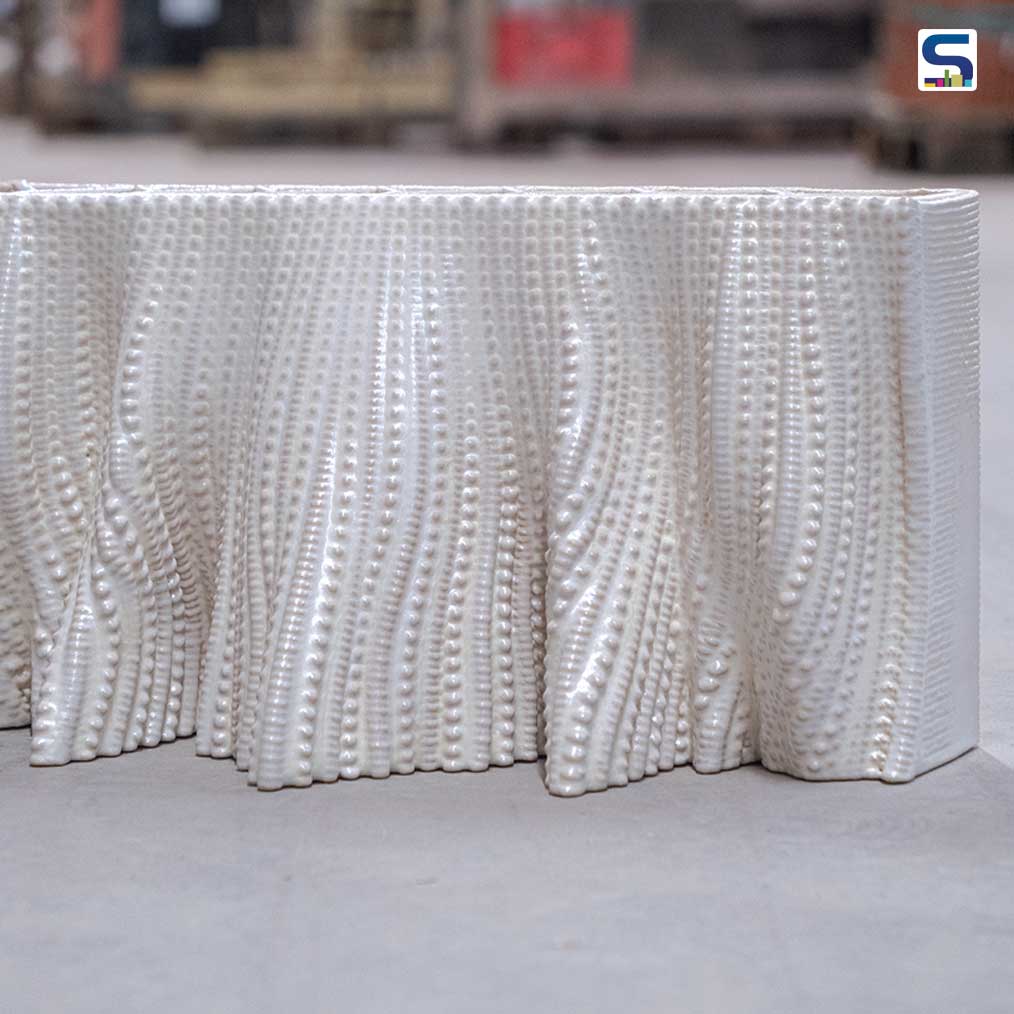
According to the studio, The four and a half metre high plinth consists of three columns and an architrave. The shopping window is pushed back, creating a deep reveal. At street level, the facade is cladded in large 3d-ceramic-printed tiles of approximately 40 x 20 cm, glazed in pearl white, with a subtle shade of yellow. The ornamented tiles start out plain at ground level and become more expressive higher up. The facade of the higher floors is composed of 3d-printed bricks, which have been glazed in three different shades of red. The bricks are composed alongside the original masonry cross bond and have abstract ornamentation. These bricks are glued into laser-cut stainless steel cassettes, referring to the original flushes. The ornamentation of the bricks is most expressive at the bottom of this part of the facade.
The design aims to inspire people around the world with a contemporary expression of digital craftsmanship, reinterpreting historical classics in new and exciting ways. The facade also refers to the collection of the nearby Rijksmuseum, where a large collection of ceramics from all over the world is stored. The highly differentiated and algorithmically designed details will be realized by using Studio RAP’s large scale 3d-printing technology, produced in-house at the architecture firm. This results in a luxury boutique that aspires to stand out amongst the surrounding buildings.